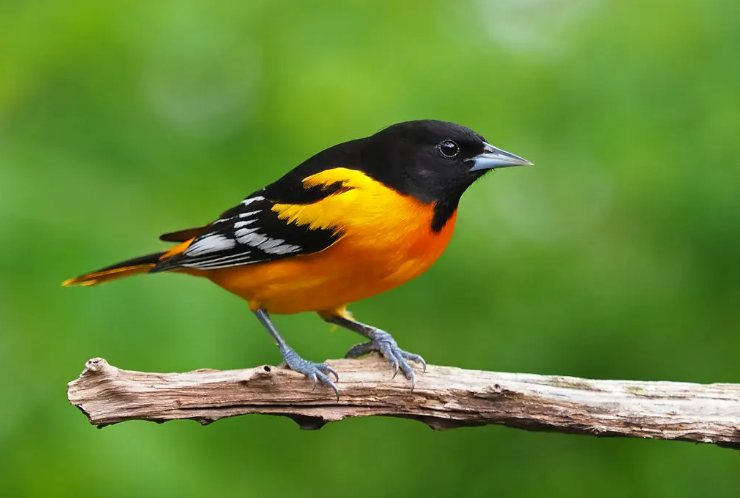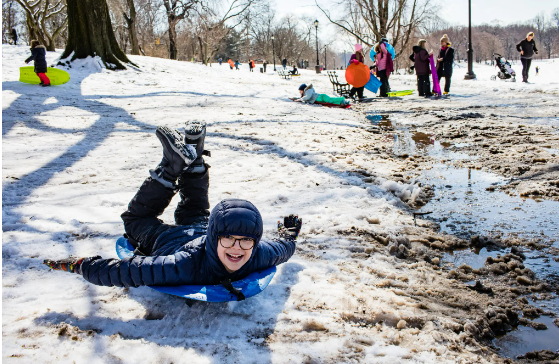“Switching Letters, Skipping Lines: Troubled and Dyslexic Minds” by Hayden Miskinis, age 12, Epping Middle School, Epping, N.H.
“Bringing Ethics to Your Plate” by Alexa Troob, age 13, Robert E. Bell Middle School, Chappaqua, N.Y.
亚军
你可以在这里找到所有的亚军社论。
高中
“Death Is Hard. Let’s Talk About It.” by Frances Brogan, age 14, J.P. McCaskey High School, Lancaster, Penn.
“You Can’t Be Free if You’re Dead: Why Freedom Isn’t Free” by Xinni Chen, age 16, Deerfield Academy, Deerfield, Mass.
“From Silence to ‘Stigma Free’: Why We Need to Talk About Suicide” by Veronika Coyle, age 16, Northern Highlands Regional High School, Allendale, N.J.
“Redefining a Life: Changing the Conversation About Gun Violence” by Anna Grant-Bolton, age 17, Evanston Township High School, Evanston, Ill.
“Every Student Should Apply to Community College, and Yes, They Are Real Schools” by Emma Kaminski, age 16, Alexander W. Dreyfoos School of the Arts, West Palm Beach, Fla.
“Freedom Isn’t Free: The Price to Preserve Democracy” by Tara Kapoor, age 15, Palo Alto High School, Palo Alto, Calif.
“To Smash the Glass Ceiling, First End the Double Standard” by Yui Kurosawa, age 16, and Carolyn Rong, age 15, Hong Kong International School, Hong Kong
“It’s Time to Take Responsibility: Addressing the Indigenous Health Crisis” by Mira Mehta, age 16, Westfield High School, Westfield, N.J.
“The Eagle of Freedom: Birdcage Edition” by Nicholas Parker, age 17, Glens Falls High School, Glens Falls, N.Y.
“Farewell, My Mary Sue” by Yu Qi Xin, age 16, St. Paul’s School, Concord, N.H.
“Why Aren’t We More Worried About Teacher Attrition in Public Schools?” by Sarah Schecter, age 17, Oakland School for the Arts, Oakland, Calif.
“The Show Must Go On: Theater Needs to Survive This Pandemic” by Clara Shapiro, age 16, Stuyvesant High School, New York, N.Y.
“It’s Time to Hold Ivies Accountable” by Jiahn Son, age 17, Bergen Tech High School, Teterboro, N.J.
“It’s OK Not to Come Out: Oftentimes Pride Is a Privilege” by Sophia
“China Must Protect Its Whistleblowers” by Xiyue Tan, age 17, Wyoming Seminary, Kingston, Penn.
“Drawing Circles Around Animals” by Ophelia Ke, age 16, Cate School, Carpinteria, Calif.
中学
“Library:Librarian :: Apple:Core” by M. Calcagno, age 13, Julia R. Masterman, Philadelphia.
“Reassessing the Value of Home Ec in 2020” by Ela Desai, age 14, Marlborough School, Los Angeles, Calif.
“Young Adult Literature: Finding Its Place in the World” by Jason Hausenloy, age 14, United World College of South East Asia East Campus, Tampines, Singapore
“Plastic: Not Always the Villain of the Piece” by Kairav Iyer, age 13, United World College of South East Asia, Dover Campus, Singapore
“Two Languages, a World of Possibilities” by Qinrong Qian, age 11, YK Pao School, Shanghai
荣誉奖
高中
“Zoning Will Not Make Houston a Flood-Resilient City” by Alex Brody, age 17, The Emery/Weiner School, Houston, Tex.
“When Encouragement Became a Shove: The Accidental Unfairness of the ‘Girls in STEM’ Movement” by Alyce Brown, age 17, Pleasant Valley High School, Bettendorf, Iowa
“Covid-19 Unmasks Our Broken Healthcare System” by Camilo Carmona, age 17, Guilford High School, Guilford, Conn.
“Making Time for Slow Food Rituals” by Meitong Chen, age 16, Gould Academy, Bethel, Maine
“A Pariah With a Platform: Woody Allen’s Unrelenting Cultural Presence” by Jordan Ferdman, age 16, Horace Mann School, The Bronx, N. Y.
“A Chord and a Melody — Hope’s Recipe” by Kaavya Ghoshal, age 16, Oberoi International School, Mumbai, Maharashtra, India
“Economic Inequality Is Crippling the American Dream” by Jarom Gordon, age 17, Alexander W. Dreyfoos School of the Arts, West Palm Beach, Fla.
“Thanksgiving, or Thanks-taking: Reassessing How We Teach American History in Our Classrooms” by Hannah Han, age 17, Harvard-Westlake School, Los Angeles, Calif.
“Society’s Downfall: Self-Centered, Manipulative Maniacs” by Tejas Jadar, age 14, West Windsor-Plainsboro High School, Plainsboro Township, N.J.
“A Triplet’s Experience With Autism: Debunking the Myths” by Allison Kalmick, age 16, New Roads School, Santa Monica, Calif.
“Memes and Meaning: It’s About All of Us” by Clara Kolker, age 16, The Masters School, Dobbs Ferry, N.Y.
“Treating Others the Way You Want to Be Treated: The Golden Rule of National Apologies” by Joanne Inyoung Lee, age 16, Seoul Foreign School, Seoul, South Korea
“The College Board Board Game: Monopoly” by Maggie Morrison, age 18, and Oren Schwartz, age 17, Cheltenham High School, Elkins Park, Penn.
“Instagram’s Creeps: They’re Closer Than You Think” by Ukyung (Heidi) Nam, age 16, Deerfield Academy, Deerfield, Mass.
“The Tear in the Union” by Jakob Oehler, age 18, Verona Area High School, Verona, Wis.
“Gen Z, Covid-19 and a Call to Action” by Ben Osagie Otoadese, age 17, Iowa City High School, Iowa City, Iowa
“Covid-19 is Canceling Standardized Tests: It’s Time to Test the Value of the SAT” by Hannah Sellers, age 16, Redwood High School, Larkspur, Calif.
“Embracing the Multitudinous Self” by Tula Simon, age 17, Livingston High School, Livingston, N.J.
“Solitary Confinement: A Mind-Altering Horror Movie” by Emma Sullivan, age 17, Hamilton-Wenham Regional High School, South Hamilton, Mass.
“No, You’re Not ‘Not Racist’” by Emily Sun, age 15, Horace Mann School, New York, N.Y.
“Earth’s Well-Deserved Break” by Benjamin Wolf-Wagner, age 16, Framingham High School, Framingham, Mass.
“Spare the Sleepy Students: Schools Should Start Later” by Jessica Yu, age 16, University of Toronto Schools, Toronto, Ontario
“The Newest Right: Internet” by Adrian Zhang, age 14, New Ivy Academy, Milpitas, Calif.
“A Universal Crisis Calls for a Universal Basic Income” by Elizabeth Zhu, age 16, University of Toronto Schools, Toronto, Ontario
中学
“Why Can’t We Just Talk?” by Alexander Birchfield Eick, age 14, Campbell Hall School, Studio City, Calif.
“America Under Crisis: Universal Basic Income and a Chance to Eradicate Poverty” by William He, age 13, The Park School, Brookline, Mass.
“Mask Culture: Long-Term Habit Rather Than Short-term Reaction” by Zizhen Li, age 14, Indian Mountain School, Lakeville, Conn.
“Trying to Fit a Square Into a Round Hole: Addressing the Covid-19 Pandemic Without Addressing the People’s Needs” by Grace Liang, age 14, LinkedKey, Mississauga, Ontario
“All Veterans Deserve a Best Friend” by Margot Polen, age 14, Tompkins Square Middle School, New York, N.Y.
“Humans, the Real Virus of the World” by Laura Thangi, age 13, Johnston Middle School, Johnston, Iowa
第三轮决赛入围者
所有获奖者的PDF和106篇进入第3轮的精彩社论。
评委
From The New York Times’s Opinion section: Mara Gay, Lauren Kelley, Alex Kingsbury, Phoebe Lett and Sue Mermelstein
From The Learning Network: Nicole Daniels, Michael Gonchar, Jeremy Engle, John Otis, Natalie Proulx and Katherine Schulten
Educators and writers from schools and organizations around the country: Erica Ayisi, Adee Braun, Amanda Christy Brown, Nico Gendron, Caroline Gilpin, Annissa Hambouz, Tom Houston, Jeremy Hyler, Susan Josephs, Shira Katz, Willow Lawson, Keith Meatto, James Menter, Sharon Murchie, Nadia Murray Goodman, Rene Panozzo, Melissa Slater, Theresa Walsh Giarrusso and Brett Vogelsinger









